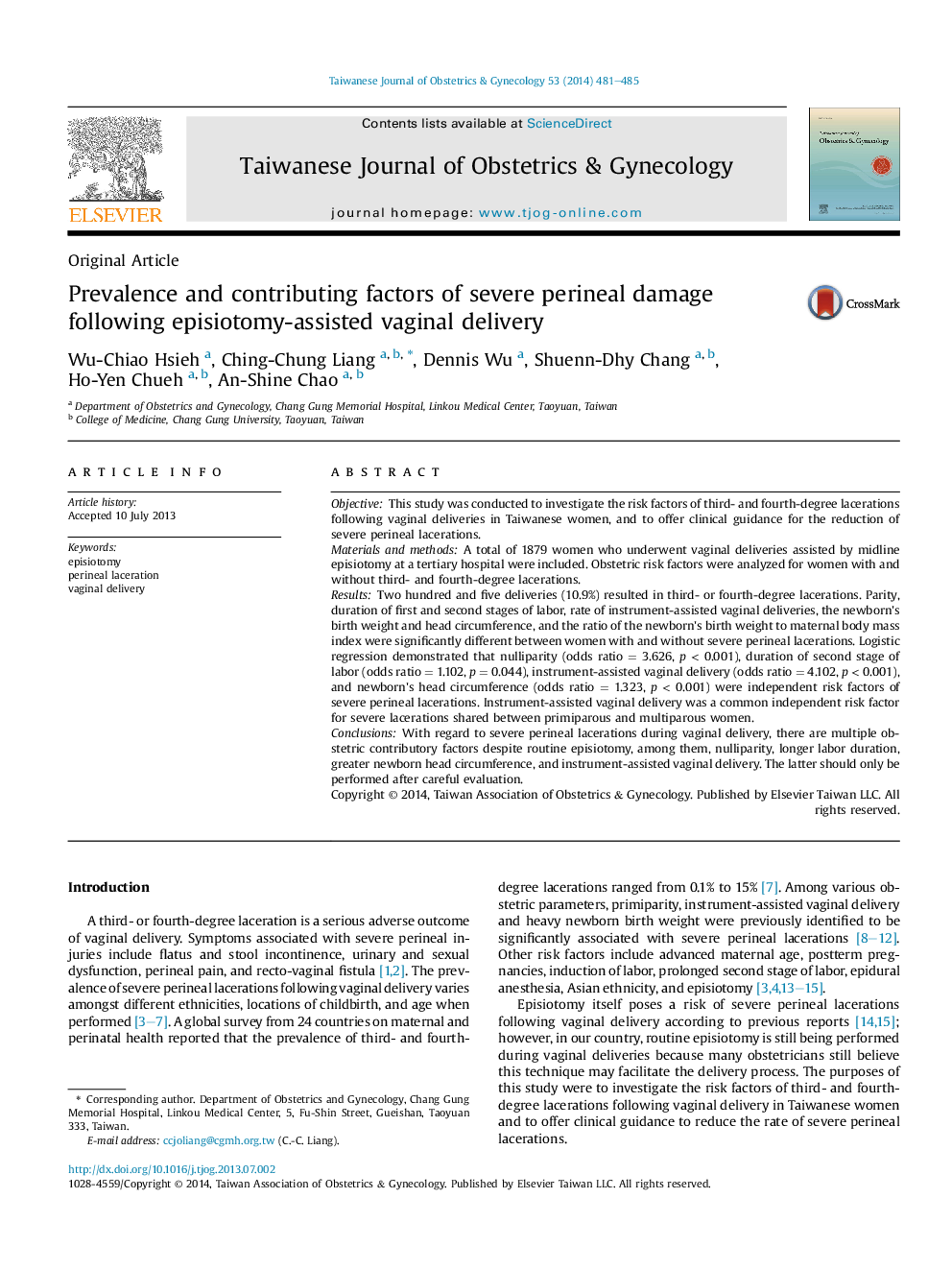| Article ID | Journal | Published Year | Pages | File Type |
|---|---|---|---|---|
| 3974942 | Taiwanese Journal of Obstetrics and Gynecology | 2014 | 5 Pages |
ObjectiveThis study was conducted to investigate the risk factors of third- and fourth-degree lacerations following vaginal deliveries in Taiwanese women, and to offer clinical guidance for the reduction of severe perineal lacerations.Materials and methodsA total of 1879 women who underwent vaginal deliveries assisted by midline episiotomy at a tertiary hospital were included. Obstetric risk factors were analyzed for women with and without third- and fourth-degree lacerations.ResultsTwo hundred and five deliveries (10.9%) resulted in third- or fourth-degree lacerations. Parity, duration of first and second stages of labor, rate of instrument-assisted vaginal deliveries, the newborn's birth weight and head circumference, and the ratio of the newborn's birth weight to maternal body mass index were significantly different between women with and without severe perineal lacerations. Logistic regression demonstrated that nulliparity (odds ratio = 3.626, p < 0.001), duration of second stage of labor (odds ratio = 1.102, p = 0.044), instrument-assisted vaginal delivery (odds ratio = 4.102, p < 0.001), and newborn's head circumference (odds ratio = 1.323, p < 0.001) were independent risk factors of severe perineal lacerations. Instrument-assisted vaginal delivery was a common independent risk factor for severe lacerations shared between primiparous and multiparous women.ConclusionsWith regard to severe perineal lacerations during vaginal delivery, there are multiple obstetric contributory factors despite routine episiotomy, among them, nulliparity, longer labor duration, greater newborn head circumference, and instrument-assisted vaginal delivery. The latter should only be performed after careful evaluation.
